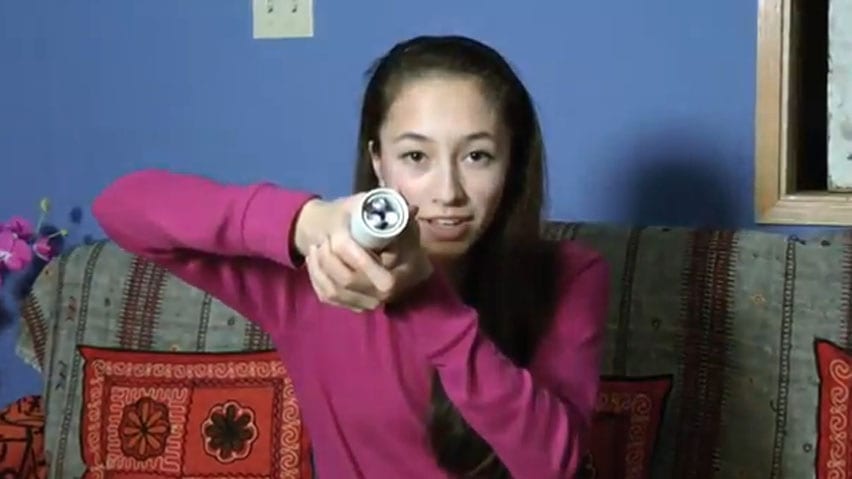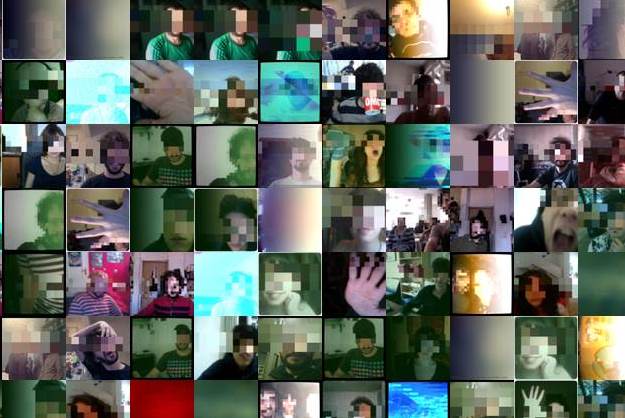
‘Hollow flashlight’ harvests energy from heat of your hand
A hollow flashlight powered by the heat from a user’s hand, designed by a 15-year-old girl from Victoria, has been picked for the finals of the Google Science Fair.
Ann Makosinski, a Grade 10 student at St. Michaels University School in Victoria, is one of 15 students from around the world who beat out thousands of entries from more than 100 countries to earn their spot as finalists.
They will visit the Google campus in Mountain View, Calif., in September for the prize ceremony, Google announced Thursday. Winners will be chosen in three age categories, and one will receive the grand prize, which includes a $50,000 scholarship from Google and a trip to the Galapagos Islands.
Makosinski said she is excited about presenting to the Google Science Fair judges, many of whom are scientists, and being able to talk to the other finalists about their projects.
Makosinski has been submitting projects to science fairs since Grade 6, and has been particularly interested in alternative energy.
“I’m really interested in harvesting surplus energy, energy that surrounds but we never really use,” Makosinski said in an interview Thursday.
While researching different forms of alternative energy a few years ago, she learned about devices called Peltier tiles that produce electricity when heated on one side and cooled on the other. She experimented with such tiles for her Grade 7 science fair project and thought of them again as a way to potentially capture the thermal energy produced by the human body.
Makosinski did some calculations to see if the amount of energy produced by warmth from a person’s hand was theoretically sufficient to power an LED bright enough to use in a flashlight, and she found it was more than enough.
Stumbling block
She bought Peltier tiles on eBay and tested them to see if they could produce sufficient power to light an LED. It turned out the power was more than enough, but the tiles generated only a fraction of the voltage needed. Further research suggested that if she made some changes to the design of the circuit, transformers could be used to boost the voltage.
Makosinski admitted there were points in the experiment when she thought it would never work, but said “You just kind of have to keep going.”
She spent months doing research on the internet, experimented with different circuits and even built her own transformers, which still didn’t provide enough voltage.
The Latest Bing News on:
Body-heat powered flashlight
- Development of ultra-high-efficiency pure red light-emitting devices with enhanced color representationon May 8, 2024 at 6:38 am
DGIST Professor Jiwoong Yang's team in the Energy Science and Engineering Department has successfully manufactured high-performance, skin-attachable perovskite pure red light-emitting devices to ...
- Product of the Week: Sabon Green Rose Body Scrubon May 7, 2024 at 5:00 am
An ESSENCE beauty writer shares how Sabon’s ultra-nourishing body scrub leaves her skin feeling post-Caribbean vacation supple in any climate.
- Amping Up Red Light Therapy Effectiveness with Mobile Deviceson May 5, 2024 at 7:25 pm
Red light therapy has been helping clients in spas and clinics with skin issues for about 20 years in the United States. It has been promoted as a treatment that reduces fine lines, age spots and ...
- Apocalyptic video shows what would happen if a needle hit planet Earth at the speed of lighton May 5, 2024 at 3:28 am
The third and final potential outcome of a needle hitting the Earth at the speed of light is that, due to its shape and speed, the needle could theoretically fly straight through one side of the Earth ...
- MIT Uncovers Photomolecular Effect: Light Can Vaporize Water Without Heaton May 4, 2024 at 7:13 pm
MIT researchers have uncovered that light can induce evaporation, not just heat, demonstrating this across various natural and synthetic water surfaces. This discovery could impact climate modeling ...
- The 8 Best Smokeless Fire Pits, Tested and Reviewedon May 1, 2024 at 3:25 am
With the exception of the gas model, the testing process was virtually the same: Assemble the appliance, light the fire ... in the unit’s wall becomes a heat-powered convection chamber.
- The North Face Bolt Polartec Power Grid Pull-On Jacket review: exceptional warmth from the lightest fleece we've testedon May 1, 2024 at 3:10 am
Where we loved the light weight of the Bolt Polartec Hooded Jacket ... and excellent at trapping your body heat to your advantage. Though this one weighs just 150 grams in a women's small, we found it ...
- Zhiyun releases MOLUS G300 COB lighton April 29, 2024 at 1:07 am
The new Zhiyun MOLUS G300 COB light packs a lot of punch into an agreeably small body.
- New regulatory body for power sector approvedon April 26, 2024 at 6:00 pm
The Cabinet of Ministers has given its green light for the introduction of a new regulatory body to the power sector, Cabinet Spokesman and Mass Media Minister Dr. Bandula Gunawardhana said. Speaking ...
- How light can vaporize water without the need for heaton April 23, 2024 at 12:56 pm
It's the most fundamental of processes—the evaporation of water from the surfaces of oceans and lakes, the burning off of fog in the morning sun, and the drying of briny ponds that leaves solid salt ...
The Latest Google Headlines on:
Body-heat powered flashlight
[google_news title=”” keyword=”Body-heat powered flashlight” num_posts=”10″ blurb_length=”0″ show_thumb=”left”]
The Latest Bing News on:
Google Science Fair
- The Top 5 Pipedrive Alternatives for 2024on May 7, 2024 at 9:13 pm
Discover the top alternatives to Pipedrive. Explore a curated list of CRM platforms with similar features, pricing and pros and cons to find the best fit for your business.
- Google SGE's embarrassing AI advice, 'drink urine to pass kidney stones quickly' shocks interneton May 6, 2024 at 4:53 am
Many users slammed Google for its outrageous result to a basic medical query, ‘Google did you fire your QA team?’ asked a user.
- Donald Trump Is Winning His Stock Market Battle Against Short Sellerson May 3, 2024 at 10:43 am
Trump holds almost 60 percent of TMTG. When shareholders of Digital World Acquisition Corp., an existing shell company, agreed to merge with TMTG earlier this year—clearing the way for the former ...
- Why Apple’s iPhone Browser-Choice Option Suckson April 29, 2024 at 12:00 am
European iPhone owners are being shown a new pop-up screen listing alternatives to the Safari browser. The developers of the browsers shown on that screen are torn about the user experience.
- How Gmail Became Our Diaryon April 25, 2024 at 3:00 am
Rebecca Makkai, Paul Murray, and other authors dig through their email archives on the 20th anniversary of Google’s other flagship product.
- Two KZN pupils among four headed to Indonesia for science competitionon April 24, 2024 at 4:21 am
Four young scientists will represent the country at the Indonesia competition, renowned as a “hub of innovation and ingenuity” from May 2 to 5 this year.
- Webby Awards Winners List: Taylor Swift, Olivia Rodrigo, Ryan Gosling, Keke Palmer, Shannon Sharpe & Julia Louis-Dreyfus Among Honoredon April 23, 2024 at 5:00 am
The International Academy of Digital Arts & Sciences (IADAS) announced the winners of the 28th Annual Webby Awards.
- Google's DeepMind CEO says the massive funds flowing into AI bring with it loads of hype and a fair share of griftingon April 1, 2024 at 1:06 am
Google DeepMind chief Demis Hassabis says the ... which I think is a bit unfortunate," Hassabis told the outlet. "And it clouds the science and the research, which is phenomenal." ...
- 7 Young Inventors Who See a Better Wayon January 2, 2024 at 10:09 am
The method he discovered made him the winner of the 2019 Google Science Fair. It uses a magnetic liquid called ferrofluid which, when added to water, sticks to microplastics. Magnets can then be ...
- Google’s Paul Ravindranath On What The “Stage-Agnostic” Tech Giant Seeks In Indian Startupson April 7, 2019 at 5:00 pm
Google Science Fair. Mentorship is not the only way of Google India’s association with startups. Since 2018, Google has actively started investing in Indian startups as well. This includes ...
The Latest Google Headlines on:
Google Science Fair
[google_news title=”” keyword=”Google Science Fair” num_posts=”10″ blurb_length=”0″ show_thumb=”left”]










